Dog owners often think they’ve hit the jackpot when their pup is finally potty trained and starts taking themselves outdoors to do their business. Unfortunately, the joy is often short-lived when owners realise their dog’s urine is causing unattractive yellow patches to appear on the lawn.
So, it’s no surprise that those with four-legged friends are searching for a solution to the issue most commonly known as lawn burn.
Throughout this blog, we explore how to effectively treat lawn burns and avoid wasting time on home remedies that simply don’t work.
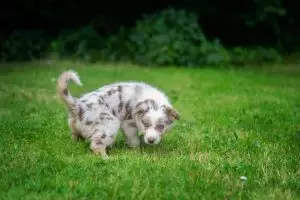
What actually is lawn burn?
Lawn burn, also known as turf burn or scorch, refers to circular yellow or brown patches of dead grass that form across your garden – often as a result of pet urine.
Why does dog pee kill grass?
Whilst there’s nothing particularly harmful about dog wee, the nitrogen in the urine is destructive to grass lawns – not the acidity as some misconceptions would have you believe.
But how does nitrogen come to be present in your dog’s urine? Well, this occurs through the digestion of protein consumed by pets, who require it for a healthy and nutritious diet. Protein breaks down through a natural digestive process to produce nitrogen, which is then disposed of from the body as waste in faeces and urine.
If any of you know a thing or two about gardening, you’ll know that nitrogen is beneficial for plants and grass. If you read the labels of many plant fertilisers, you should find they contain nitrogen.
So, this leaves the question, why on earth does the nitrogen in dog urine kill off the grass?
While some nitrogen is good for lawns, dog urine tends to contain higher levels that can damage and potentially kill off your lawn.
Ultimately, the real problem lies in the level of nitrogen concentration dog urine contains.
What factors worsen the effects of dog wee on grass?
High nitrogen concentration alone isn’t the only factor responsible for killing grass – other aspects can influence the scale of the problem:
1. Dog Size
Naturally, the size of your dog will affect how much of an issue lawn burn is in your garden. Those with larger dogs, such as Great Danes and Saint Bernards, can expect worse lawn burn patches covering a larger area.As you may have guessed, this is because bigger canines can deposit larger volumes of urine compared to small breeds, such as Yorkshire Terriers and Jack Russels.
That’s not to say that small dogs don’t have an effect, it just won’t be as significant a problem in comparison.
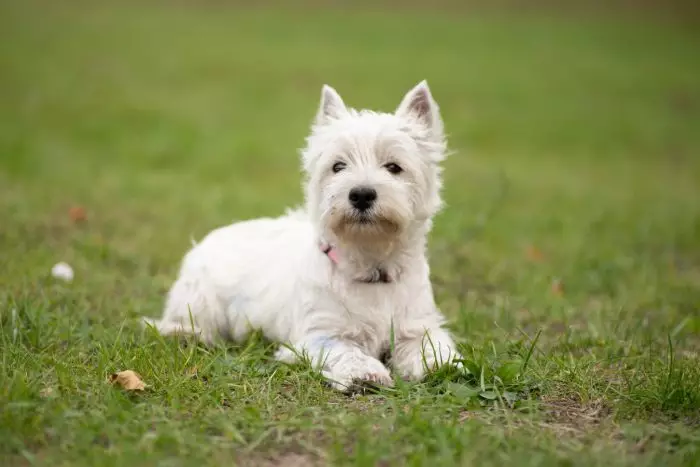
2. The gender of your pooch
A common misconception people often believe is that female dogs are the only culprits of dog urine lawn burn. This idea stems from the differences in the way male and female dogs urinate.
As we all know, when male dogs wee they tend to lift their leg and aim towards an area or object, such as a fence. When they do this near your lawn, the urine is more likely to stay closer to the surface of the grass. On the other hand, female dogs urinate in a squatting position, meaning the urine will penetrate deeper into the grass and cause more severe burns.
But in reality, it doesn’t matter what gender your dog is as both can cause lawn burn spots.
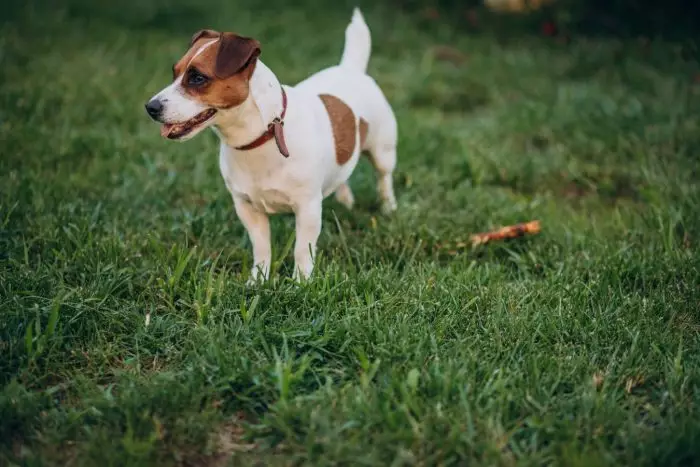
3. The spot your dog chooses to wee
If your dog has a favourite spot on your lawn where they prefer to urinate, it can experience frequent and greater damage than the rest of your grass. Depending on how you see it, some dog owners consider it a good thing as they don’t have lawn burns across their garden and knowing where their dog’s pee makes treating that area much easier.
However, we can all agree it’s not particularly advantageous if you’re dreaming of a flawless lawn to be proud of!
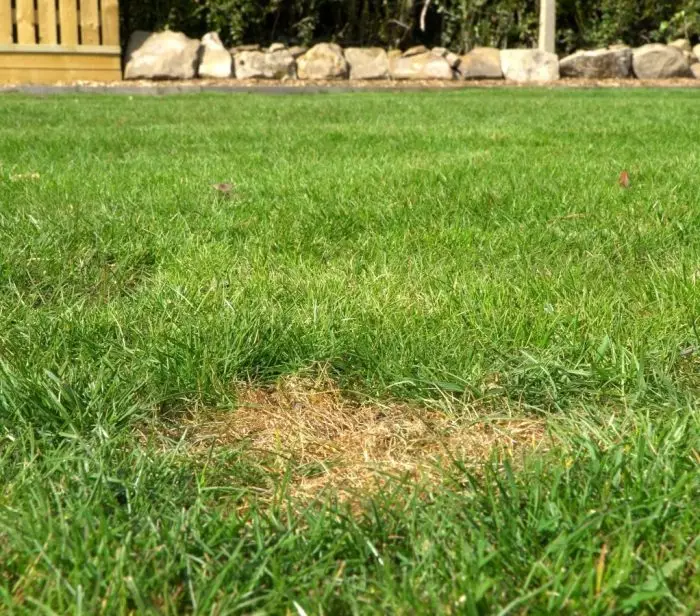
4. Grass seed variety and lawn sensitivity
The most popular types of grass in UK gardens happen to be the most susceptible to damage. Bermudagrass and Bluegrass are more sensitive to nitrogen than other types of grass. The exact reason for this is not known, although it is assumed that the short-length characteristics of these grasses contribute to allowing more dog urine to access a greater surface area and consequently cause more damage.
Whilst this is something to be cautious of, no grass is immune to the damage.
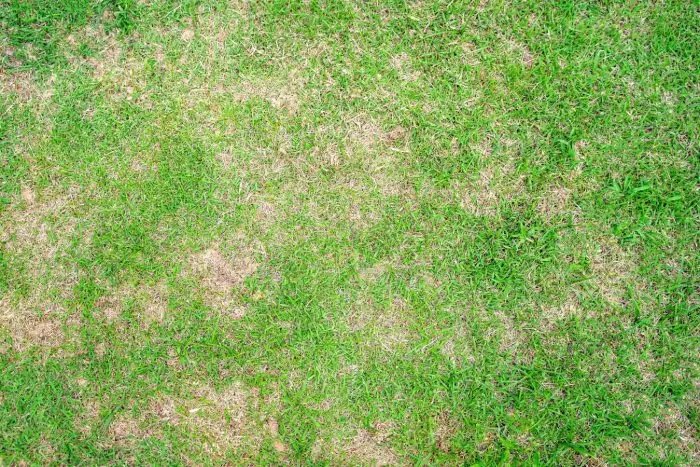
Home remedies for lawn burns that don’t work
There are plenty of bogus home treatments out there that supposedly repair lawn burn patches and prevent dog pee killing grass. However, just like toothpaste isn’t an effective spot treatment, these top so-called remedies have been proven to be completely ineffective. So, be sure to stay clear of the following:
1. Baking Soda
Baking soda seems to be the go-to solution for everything. Want a whiter shade of teeth? baking soda. Got heartburn? “use baking soda. Want to get rid of pet odour? Baking soda.
We know several reasons why baking soda isn’t the best pet odour eliminator but that’s a whole other topic. The point is, it would be surprising to us if people still used baking soda for its intended purpose – baking!?
According to this ‘solution’, the baking soda supposedly prevents the grass from turning yellow. However, as we’ve already established, lawns turn yellow because of the nitrogen concentration in your dog’s pee. Baking soda can’t neutralise nitrogen, so it’s not going to save or protect your grass!
Baking soda may even cause more damage than good as it’s a salt (sodium bicarbonate), which plants don’t react well to.
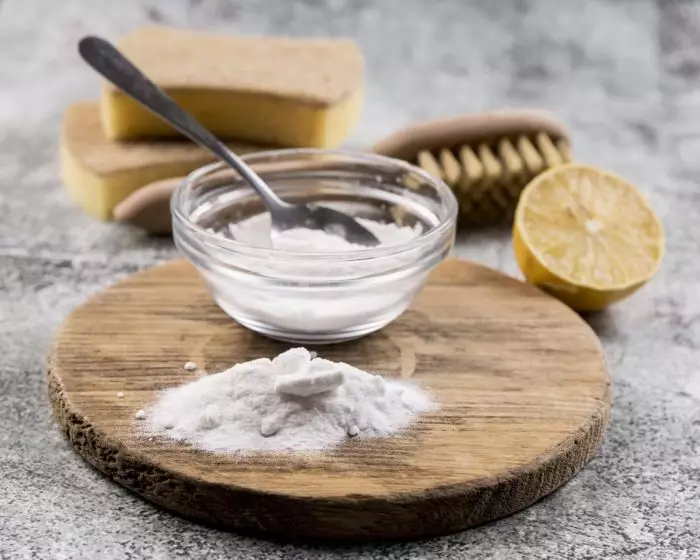
2. Tomato juice, apple cider vinegar, and vitamin C
Another ‘tip’ is to supplement tomato juice, apple cider vinegar, or vitamin C into your dog’s diet to alter the pH of the dog’s urine, which is intended to prevent lawn damage. This idea is based on the myth that dog wee is acidic.
Just like baking soda, this remedy doesn’t deal with the real problem of high nitrogen concentrations – plus we highly advise treating the lawn and not the dog! After all, it’s not the pH of the dog’s urine that kills the grass, so it’s not worth putting your dog through the hassle.
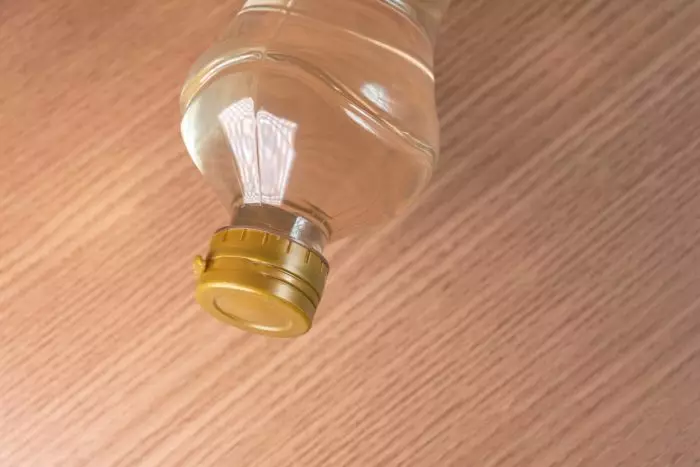
What happens if you don’t treat lawn burns?
Leaving lawn burn isn’t detrimental to your lawn, however, the grass will eventually degrade and you’ll be left with dirt patches, which aren’t particularly nice to look at.
But don’t worry, our experts have laid out their top tips for treating brown patches and stimulating new grass growth.
How to treat dog urine on grass in simple steps
Whilst you may not be able to stop your pooch from peeing on your lawn, there are some effective ways to treat lawn burn patches and keep your grass looking luscious and green.
1. Reseed the dead patches of grass
Whilst you can’t bring dead grass back to life, you can breathe new life into your garden by reseeding – start by lightly scattering in grass seed that matches your existing lawn type across the affected area – our very won Patch Repair is a great option. Alternatively, you could also apply more urine-resistant grass seeds, such as perennial ryegrass, to the afflicted patches but it may make your lawn appear uneven if you have multiple burn spots to treat.
If your budget can stretch, you could invest in a brand-new lawn and move forward with lawn burn prevention instead.
2. Use a dog urine neutraliser for grass
One of the most effective ways to treat damaged grass patches, restore grass health, encourage luscious growth once re-seeded, and reduce future damage is by applying a dog urine neutraliser for grass that reduces and removes nitrogen.
We recommend regularly treating your lawn with environmentally friendly Envii Neuturine – our tried and tested formula is made from only natural ingredients and can be applied to repair lawn burn spots or as a prevention treatment.
Every tablet contains millions of task-specific beneficial bacteria that break down nitrogen in a dog’s urine – it even works after dog urine has come into contact and sunk into the grass.
Another benefit of Neuturine is that it contains seaweed extracts that help to fertilise and stimulate lawn growth!
Preventing lawn burn spots
Here are some successful ways to maintain your freshly laid or repaired lawn and shield it from the effects of dog urine:
- Rinse your dog’s pee with a hose to dilute it.
- Keep on top of watering your lawn – dry grass absorbs nitrogen at higher levels.
- Keep applying dog urine neutraliser for grass according to the instructions on the packet.
- You could teach your pup to relieve themselves on gravel or patios instead.
Stop wasting time on unreliable hacks or the hassle of messing with your dog’s food. By following our essential guide to treating lawn burn, you can prevent urine from killing grass and replenish it, providing your garden with a new lease of life!
Want to talk to a professional?
Here at Envii, we appreciate that through no fault of their own, our furry friends often leave a trail of their toilet trips on our lavish lawns!
If you could benefit from more information about our exceptional Envii Neuturine formula, or any other of our lawn products, we’re on hand to help!
To get in touch, send us a message by email at info@envii.co.uk or call us on 01246 240 880 if you prefer.
If you’re looking to improve the overall health of your lawn or your pet’s urine is a problem both inside and outside the house, you might also like…
Featured products

Envii Greenkeeper’s Secret
Liquid lawn fertiliser helps to encourage lush, green growth.
£9.99 View Product
Envii Pet Fresh
Eliminates odours and stains caused by pet urine in the home.
£7.99 View Product

 Call us on 01246 240880
Call us on 01246 240880 Sign-up and receive 10% off
Sign-up and receive 10% off


How do you apply the tabs for dog urine burned lawns?